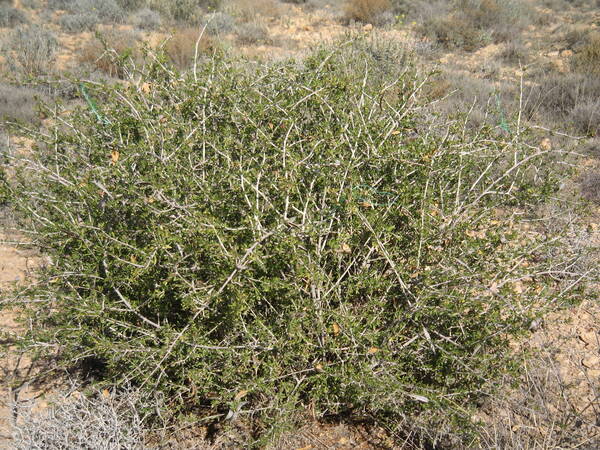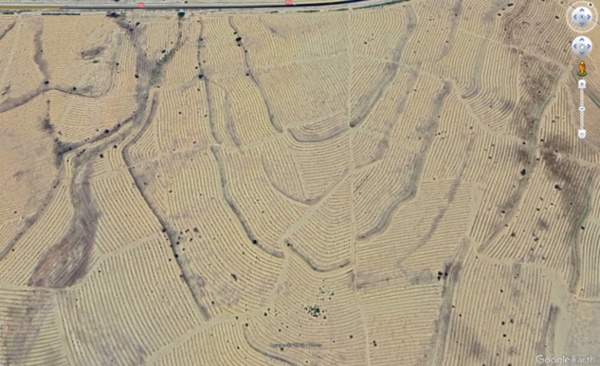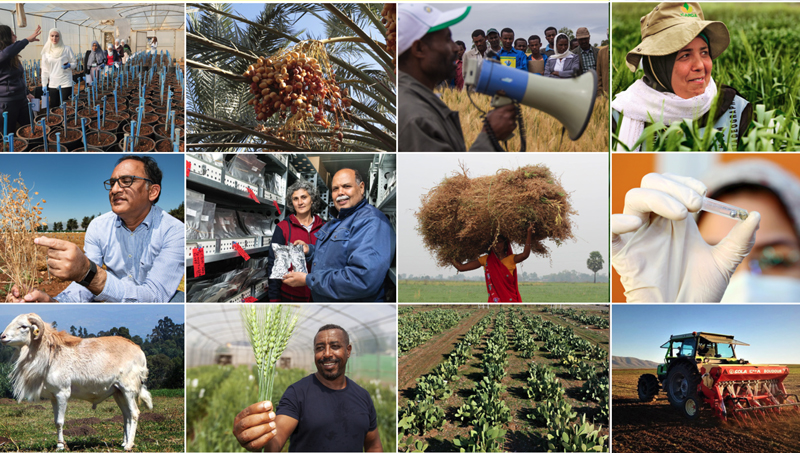Native Species Restoring Degraded Silvopastoral Systems in Dry Regions

Using native species to restore degraded silvopastoral systems in arid areas - a transformative solution for a sustainable and resilient future. This work was conducted as part of the CGIAR Research Initiative on Livestock and Climate, which is supported by contributors to the CGIAR Trust Fund.
Silvopastoral systems - integrated farming systems in which livestock grazing and pasture are combined with trees/shrubs - in North Africa, particularly in Tunisia, are rapidly degrading through the loss of natural vegetation cover and biological diversity over the past decades. This degradation is primarily caused by human activities such as overgrazing and cultivation, as well as unpredictable and extreme weather, including frequent droughts. The economic and ecological consequences of this degradation are severe.
To tackle this pressing issue, local governments and development agencies must implement restoration measures urgently. In cases of irreversible degradation where natural regeneration is no longer viable, the use of innovative rehabilitation techniques becomes essential. Drawing from past attempts using non-native grass reseeding or the introduction of unsuitable ecologically demanding exotic shrubs that were found to consume excessive water, in consultation with its partners, ICARDA identified well-adapted native species and the most appropriate techniques for their domestication and multiplication for large-scale rehabilitation of degraded silvopastoral systems in dry regions.

Exotic Varieties’ Limitations
Within the framework of the CGIAR’s Livestock and Climate Initiative, ICARDA, in collaboration with national partners, development agencies (DGF, OEP, and ODESYPANO), research institutions, and community-based organizations, is leading efforts to transform national programs and strategies concerned with the rehabilitation of silvopastoral systems.
Exotic species were initially selected over indigenous ones because of their fast growth and the availability of their seeds in the local market. Furthermore, public nurseries have developed extensive skills in handling exotic species over many decades.
However, several challenges were identified, including a huge demand for a limited range of plant species, insufficient nursery capacity, and an incomplete understanding of best practices for propagating certain species. Issues such as the lack of national coordination for seed collection and multiplication result in the insufficient capacity to meet projected needs. In addition, the quality of seedlings produced has been recognized as a limiting factor. Priority actions involve reducing pressure on remnant plant populations, mapping suitable agroecological sectors, and ensuring an adequate supply of quality seeds for revegetation.
Through various awareness events, including webinars, field days, and training courses, ICARDA emphasized the value of native species over exotic plants.

Indigenous Species’ Potential
Native species, despite their slow growth, exhibit superior adaptability to local conditions, especially with regard to drought and high temperatures. This remarkable attribute stems primarily from their capacity to develop a robust rooting system, enabling them to prosper even in harsh environments. Once established (typically within 1 to 2 years), they require minimal upkeep while flourishing almost effortlessly.
Pilot Sites and Future Efforts
ICARDA has now established two pilot sites in collaboration with local organizations. The first, located in Zaghouan in Northern Tunisia, involves planting native trees (Carob trees) and reseeding herbaceous legumes (Sulla) where Acacia (exotic species) have been planted. The second, in Beni Khedeche in Southern Tunisia, focuses on reseeding native perennial grasses (Buffer grass and Stipa) and implementing water harvesting techniques in a degraded rangeland site.
As a way forward, efforts will focus on overcoming the lack in quantity and quality of seeds and seedlings of native species. This includes establishing pilot nurseries, resolving constraints related to seed centers, promoting the use of non-conventional water in seedling production, and creating Public-Private Partnerships (PPPs), and knowledge-sharing products to facilitate sustainable restoration. Priority actions also involve reducing pressure on remnant plant populations, mapping suitable agroecological sectors, and ensuring a sufficient supply of quality seeds for revegetation.
Contributors:
- Azaiez Ouled Belgacem, Senior Scientist, Rangeland Ecology and Management, ICARDA
- Sawsan Hassan, Associate Scientist - Forage Agronomist, ICARDA
- Mounir Louhaichi, Research Team Leader, Rangeland Ecology and Forages, ICARDA
Further readings
Louhaichi, M. et al. 2022. Sustainable Rangeland Management Toolkit for Resilient Pastoral Systems. IUCN and ICARDA. 168 pages. https://hdl.handle.net/20.500.11766/67732
Louhaichi, M. 2023. Silvopastoral Restoration to Enhance Ecosystem Services and Increase Farmers' Income. Beirut, Lebanon: International Center for Agricultural Research in the Dry Areas (ICARDA). https://hdl.handle.net/20.500.11766/68938
Louhaichi, M., Hassan, S., Jamel, K., and Ouled Belgacem, A. 2023. Challenges and opportunities for promoting use of native species for the rehabilitation of degraded silvopastoral systems in Tunisia. Beirut, Lebanon: International Center for Agricultural Research in the Dry Areas (ICARDA). https://hdl.handle.net/20.500.11766/68814
Ouled Belgacem, A., Hassan, S., and Louhaichi, M. 2023. Training Course on Seed Collection & Conservation and Nursery Management of Indigenous Silvopastoral Species. Beirut, Lebanon: International Center for Agricultural Research in the Dry Areas (ICARDA). https://hdl.handle.net/20.500.11766/68819
Louhaichi, M., Slim, S., Hassan, S., and Verbist, J. 2023. Cultivating sulla for silvopastoral restoration the Mediterranean basin. Rome, Italy: Food and Agriculture Organization of the United Nations (FAO). https://repo.mel.cgiar.org/handle/20.500.11766/68816.
Gamoun, M., Ouled Belgacem, A, and Louhaichi, M. 2018. Diversity of desert rangelands of Tunisia. Plant Diversity, 40 (5), pp. 217-225. https://hdl.handle.net/20.500.11766/9074
Gamoun, M., and Louhaichi, M. 2021. Botanical Composition and Species Diversity of Arid and Desert Rangelands in Tataouine, Tunisia. Land, 10 (3). https://hdl.handle.net/20.500.11766/13035
Slim S., Louhaichi M., Gamoun M., Ates S., Hassan S., Ben Romdhane O., Ouled Belgacem A. 2021. Assessment of soil surface scarification and reseeding with sulla (Hedysarum coronarium L.) of degraded Mediterranean semi-arid rangelands. Afr. J. Ecol., 1-10, https://doi.org/10.2989/10220119.2020.1838608.
Dhief A., Abdellaoui R., Tarhouni M., Ouled Belgacem A., AshiSmiti S., Neffati M.2011. Root and aboveground growth of rhizotron-grown seedlings of three Tunisian desert Calligonum species under water deficit. Canadian Journal of Soil Science, 91:15-27.
Visser M., Ouled Belgacem A., Neffati M. 2010. Reseeding Mediterranean dryland cereal fallows using Stipa lagascae R. & Sch.: influence of cutting regime during the establishment phase. Grass and forage Science, 65(1): 23-27.
This work was conducted as part of the CGIAR Research Initiative on Livestock and Climate, which is supported by contributors to the CGIAR Trust Fund.



